 My note taking and letter writing desk. My Walt Whitman Box seems to be right at home.
My note taking and letter writing desk. My Walt Whitman Box seems to be right at home.Wednesday, June 27, 2007
Preparing for the Fall
 My note taking and letter writing desk. My Walt Whitman Box seems to be right at home.
My note taking and letter writing desk. My Walt Whitman Box seems to be right at home."Trash"
This is a story I've been working on for about three years. I'm glad it has found a home.
This is description of the Sun from the magazine's website:
The Sun isn't "literary" or "political" or "spiritual" in the usual sense. It begins where those labels end, which is where life gets interesting. Each month, in essays, stories, interviews, and poetry, people write in The Sun of their struggle to understand their lives, often baring themselves with surprising intimacy. Our writers aren't afraid to take risks, to look at something ugly -- or beautiful -- and describe it honestly.
The Sun stands for everything I've come to understand about what writing needs to be for me.
Until there be no Guernicas left
COVER-UPSSlaughter of Innocents
Pablo Picasso has words for Colin Powell from the other side of death
Ariel Dorfman
Sunday, March 9, 2003
Yes, even here, here more than anywhere else,
we know and watch what is going on
what you are doing with the world
we left behind
What else can we do with our time?
Yes, there you were, Mr. Secretary,
I think that is how they call you
there you were
standing in front of my Guernica
a replica it is true
but still my vision of what was done
that day to the men to the women
and to the children to that one child
in Guernica that day in 1937
from the sky
Not really standing in front of it.
It had been covered, our Guernica,
covered so you could speak.
There in the United Nations building.
So you could speak about Iraq.
Undisturbed by Guernica.
Why should it disturb perturb you?
Why did you not ask that the cover
be removed
the picture
be revealed?
Why did you not point to the shrieking
the horse dying over and over again
the woman with the child forever dead
the child that I nurse here in this darkness
the child who watches with me
as you speak
and you speak.
Why did you not say
This is why we must be rid of the dictator.
Why did you not say
This is what Iraq has already done and undone.
Why did you not say
This is what we are trying to save the world from.
Why did you not use
Guernica to make your case?
Were you afraid that the mother
would leap from her image and say
no he is the one
they are the ones who will bomb
from afar
they are the ones who will kill
the child
no no no
he is the one they them
from the distance the bombs
keeping us always out of sight
inside death and out of sight
Were you afraid that the horse
would show the world the near future
three thousand cruise missiles in the first hour
spinning into Baghdad
ten thousand Guernicas
spinning into Baghdad
from the sky
Were you afraid of my art
what I am still saying
more than sixty five years later
the story still being told
the vision still dangerous
the light bulb still hanging
like an eye from the dead
my eye that looks at you from the dead
beware
beware the eye of the child
in the dark
you will join us
the child and I
the horse and the mother
here on the other side
you will join us soon
you will journey here
as we all do
is that why you were
so afraid of me?
join us
and spend the rest of eternity
watching
watching
watching
next to us
next to the remote dead
not only of Iraq
not only of
is that why you were
so afraid of that eye?
watching
your own eyes sewn open wide looking
at the world you left behind
there is nothing else to do
with our time
sentenced to watch
and watch
by our side
until there will be no Guernicas left
until the living understand
and then, Mr. Secretary,
and then
a world with no Guernicas
and then
yes then
you and I
yes then
we can rest
you and I and the covered child
Ariel Dorfman's latest books are "Exorcising Terrror: The Incredible Ongoing Trial of General Augusto Pinochet" and the poems, "In Case of Fire in a Foreign Land (Duke University Press)." He has just completed a play about Picasso during the Nazi occupation of Paris.
http://sfgate.com/cgi-bin/article.cgi?f=/chronicle/archive/2003/03/09/IN201026.DTL
After reading Cynthia's 47th Birthday entry, "Baring It All" I had a dream about Dr. Seuss.

Alison Luterman, the poet I roomed with when I taught workshops at Esalen, recently sent out an e-mail about a book she wants to do on midlife dreams. I think Alison's book idea inspired my dream also.
I just love my dream life. I've been thinking about that dream all day.
My Walt Whitman Box
 My Walt Whitman Box (top view)
My Walt Whitman Box (top view) My Walt Whitman Box (front view). On the other side of the photograph is a mirror, and this photo/mirror part of the box rotates.
My Walt Whitman Box (front view). On the other side of the photograph is a mirror, and this photo/mirror part of the box rotates.

My Walt Whitman Box (Back View). The mirror part of the box can be turned around and the other photo will be showing (upside down).
------------------------------------------
As soon as I saw the box ($1) at Goodwill, I knew exactly what I wanted to do with it: it would become my Walt Whitman box. I'd just been reading Whitman, and I felt close to his ideas. When Whitman says, "I celebrate myself," he is also saying that he celebrates me (actually all, everything, the cosmos). I love that I have a mirror on one side and Whitman's "Christ" photo on the other. I can rotate that piece of the box and see my face, Whitman's face, my face, and the boundaries of time and distance fade away. I can also allow the master poet to show me the importance of writing. The going gets hard sometimes: it's nice to have Walt sitting beside me. (The box sits on a desk that I hand-painted a few years ago that also came from Goodwill).
Sunday, June 24, 2007
I Am With You

Are you the new person drawn toward me, and asking something significant of me? / Do you think it so easy to have me become your lover? / Do you suppose I am trusty and faithful? / Do you see no further than this facade--this smooth and tolerant manner of me?
There's much about Whitman that has the capability to offend, but that is what makes reading him so delicious. To understand Whitman, we must have learned to understand paradox and contradiction. To understand Whitman, we have to be able to relish life's questions. Whitman's poetry was dangerous when it was written and it's dangerous now, and that's why I love it. It is non-conformist in every way. To read and to understand a Whitman poem is to become potentially dangerous yourself, and I like the edginess of that. One of the things I most love about Walt Whitman is his affection for his unseen reader, which is palpable in his poems "Song of Myself," "I Sing the Body Electric," "Song of the Open Road," and, my favorite, "Crossing Brooklyn Ferry":
I am with you, you men and women of a generation, or ever so many generations hence, / I project myself, also I return--I am with you, and you know how it is.
What is so beautiful about this, for me, is that Whitman transcends time and place and at the same time he renews my belief that being a writer is an important thing, a life-affirming thing. His presence is so real as I read his poems that I can feel his breath stirring my hair or warming the back of my neck. Whitman's poetry was not very popular in his own time, and excepting Hart Crane's work, Whitman's influence was not what I would call huge for the first half of the 20th Century. Whitman came to power in the 1950s and 1060s with the Beats who loved those long lines of free verse, the sexual freedom in the lines, the expansion and the movement in the lines which Kerouac would act out in writing On The Road. By the 1970s, when I did my undergraduate work, Walt Whitman was a necessary part of the literature curriculum, though somewhat of an ill fit for post-Watergate times. I remember that the cynicism of that decade made it difficult for me to connect with Whitman's poems and yet I saved my lumpy battered copy of Leaves of Grass, and I still have that college copy, although it got soaked when Allen accidentally drove into a swamp and flooded the whole bottom of our car. I knew the poems were important; I just didn't know how to understand them. To explicate a Whitman poem line by line is to destroy the spirit and life of the poem. But explication was what I did best in those days.
I think Whitman is a poet you must come to several times throughout your life. You must keep a copy of Leaves of Grass on hand and you must take it off the shelf and dust it off and read it now and again. You have to let the poems penetrate you like Whitman's eyes penetrate you in that portrait. When you do that, you can feel the divinity of everything. I've read Whitman enough at this point in my life that I do feel he is with me. As I think about it, I live in cynical times now. But something about me has changed enough to let Walt Whitman in. I've long ago given up on absolutes, and I'm not that naive young wife and mother who believed everything in my life would turn out just great because I was doing what I was "supposed" to and so I somehow deserved success. In fact, my whole idea of success was different then, more mainstream. Now I work to define success in a way that makes sense for me. This has broadened my concept of what it means to embrace life. It is as Isaac Gewirtz says of Whitman, that he had an authentic experience of the cosmos "and all that it contains--rivers, clouds, stars, animals, cruelty, compassion, and, especially, his own and other soul/bodies journeying down the open road." To me life is about his kind of realization, this kind of connection.
I bought a little jewelry box at the Goodwill yesterday for a dollar. I want to make an art box out of it and call it my Whitman Box.
Monday, June 18, 2007
Art and Suffering (Part II)

"A tapestry copy of Picasso's Guernica is displayed on the wall of the United Nations building in New York City, at the entrance to the Security Council room. It was placed there as a reminder of the horrors of war. Commissioned and donated by Nelson Rockefeller, it is not quite as monochromatic as the original, using several shades of brown. On February 5, 2003 a large blue curtain was placed to cover this work, so that it would not be visible in the background when Colin Powell and John Negroponte gave press conferences at the United Nations. On the following day, it was claimed that the curtain was placed there at the request of television news crews, who had complained that the wild lines and screaming figures made for a bad backdrop, and that a horse's hindquarters appeared just above the faces of any speakers. Diplomats, however, told journalists that the Bush Administration pressured UN officials to cover the tapestry, rather than have it in the background while Powell or other U.S. diplomats argued for war on Iraq. [9]"
Picasso was not at Guernica when the bombings occurred; however it is believed that he put a good deal of his personal anguish into the painting.
Bent double, like old beggars under sacks,
Gas! Gas! Quick, boys!
The Suffering Artist (In A World That Doesn't Like Suffering)


If you could take a pill that would lessen the impact of a traumatic event on you, would you take it? According to 60 Minutes last night, experiments are now going on that would make it possible to keep unpleasant events from becoming debilitating memories. Scientists have discovered that adreneline helps to solidify memories, and thus blocking adreneline has the capacity to lessen the impact of traumatic events on us. Not surprisingly, the military is very interested and has chipped in money for further research.
As wonderful as the implications are for a pain-free life, it seems to me that his medication also has the potential impact art and religion, since suffering is rooted in both.
Many artists identify strongly with Saint Sebastian and think of suffering as a motivation to the creation of art.
Regarding this new medication, I wonder how a determination would be made as to which suffering is debilitating and which gives us meaning and inclines us to wisdom? Erasing suffering is the easy way, but is it the best way? I find myself wondering: What if Dorothy Allison had taken this drug: would we have Bastard Out of Carolina? Would Hemingway have written "Big Two-Hearted River" or Farewell to Arms? Would we have the anti-war poetry of Wilfred Owen?
I don't mean to put art before the well-being of any individual. But might the poetry of Owen affect some individuals--who may one day become leaders-- in such a way as to make war unthinkable to them? Would this give purpose to Owens' suffering? And might this future leader who has been influenced by Owen make life better for us, more peaceful, more safe?
Being able to empathize with Jesus' suffering is important to Christians. It isn't just the fact of his suffering, it is Christians' identification with Jesus' suffering that makes the spiritual life complete and meaningful for them. The same was true for believers in Odin, who hung himself upon a tree. And then there are the Buddhists who see our attachment to things being as the cause of our suffering. Although I no longer identify myself as Christian, I still find Jesus' suffering, as well as Odin's, compelling and meaningful. I also have some realization of how my attachment to things makes me unhappy, and I think a lot about what to do about it.
And then there is Sisyphus. It is harder to find a better example of "meaningless suffering" than Sisyphus.
Albert Camus wrote a philosophical treatment of the myth of Sisyphus. In the last chapter Camus compares humans' existence with the plight of Sisyphus, who was condemned by the gods to repeat the meaningless task of pushing a rock up a mountain only to see it roll down again. The essay concludes, "The struggle itself is enough to fill a man's heart. One must imagine Sisyphus happy."
It was this idea that such a profound impact on Bobby Kennedy, who changed his view on the Death Penalty from PRO to CON as a result of reading Camus. Camus' work also gave him perspective on his own suffering over the loss of his brother Jack.
I am not imagining a drug-free world or suggesting that a drug-free world would be better than the world we have now. I know and fully accept that many people need medication in order to live fruitful lives.
I'm just trying to explore for myself some of the implications of suffering in our lives.
Sunday, June 10, 2007
My Yard, Three Views. View #3
 Buddha (L) and Sweet Pea (R) on the swinging bench where Allen and I have our coffee in the mornings and look out over my flower garden.
Buddha (L) and Sweet Pea (R) on the swinging bench where Allen and I have our coffee in the mornings and look out over my flower garden.Dogs. My parents and brothers had an unexplained disgust for dogs. They never had one, and whenever they saw one they grimaced and said unpleasant things. So I grew up at a distance from these animals, distrusting and fearing them. Allen and I got Buddha in 2005. Allen loves Boston Terriers, he'd had one when he was child. I was content to sit back and watch Allen and Buddha bond, not wanting to get that close. I didn't know how to act around a dog, how to approach a dog, play with a dog. When Sweet Pea came to us in May I had no intentions of things turning out any differently. I grew up with cats, and I love their independence. Allen says I have the temperament of cat: private, possessive, solitary. But when Allen had to go away for a week and I was left to tend Buddha and Sweet Pea, something happened. Sweet Pea bonded with me. She follows me everywhere and cries when I leave. She wants to sit at my feet, lie with me when I rest. This situation has caused me to think deeply about bonding and communication. I love quiet and I love being alone. Sweet Pea's demands on me have caused me to readjust my thinking. When I'm away from her, I find myself thinking about her and looking forward to our reunion. I think wistfully of her face, the black patch over one eye, white patch over the other, how her cheeks puff with air. I think of her pink belly, which is so soft and makes me think of a human baby.
My Yard, Three Views. View #2
 My cats and crows altar.
My cats and crows altar. My buzzard skull that Allen found and decorated for me.
My buzzard skull that Allen found and decorated for me.My Yard, Three Views. View #1
 The poppies I planted over my cats' graves.
The poppies I planted over my cats' graves. I've always thought of this part of the poppy as being tough and durable, like bone.
I've always thought of this part of the poppy as being tough and durable, like bone.Little poppies, little hell flames,
Do you do no harm?
You flicker. I cannot touch you
I put my hands among the flames. Nothing burns.
And it exhausts me to watch you
Flickering like that, wrinkly and clear red, like the skin of a mouth
A mouth just bloodied.
Little bloody skirts!
She then goes on to compare the flames of the poppies to the "fumes" she cannot touch: it's impossible not to think of how she died, by gas. I've often thought of the sad implications of that death, that she killed herself with a gas stove, a symbol of women's domesticity. It's widely believed she felt trapped in that life.
"Poppies in October" is a more hopeful poem. She writes of the blooms as "A gift, a love gift / Utterly unasked for / By a sky". Then, "O my God, what am I / That these late mouths should cry open / In a forest of frost, in a dawn of cornflowers." Her sense of awe here is so moving to me. It is as though she captures the soul crying out for love.
I took some photos of my poppies this year. Their blooms are so brief that, busy with other things--I often miss seeing them in all their glory.
As much as I love the blooms, I think I love them even more when the bloom sheds and the stem and seedpod stand in the garden. If the blooms are mouths, then, to me, the stems and seedpods are bones. I planted poppies in two places in my garden. The most prodigious poppies grow over the graves of my cats. The roots of the poppies feed on the bones of those cats, and I love these poppies the best.
Saturday, June 09, 2007
Openly, yes
 I saw a hummingbird drinking from this lily.
I saw a hummingbird drinking from this lily.Today I spent the morning working in the flower garden. I was rewarded by seeing a snake and a hummingbird. The snake went to rest in the shade of the sedum. The hummingbird drank from a lily. A great crack sounded. The dogs barked. The top of a tree fell to the ground.
Black Earth
Openly, yes,
with the naturalness
of the hippopotamus or the alligator
when it climbs out on the bank to experience the
sun, I do these
things which I do, which please
no one but myself. ...
--Marianne Moore
Friday, June 08, 2007
The News Today Was About The Sun

I continued hoeing and pulling in my garden today. I worked this morning and then again in the evening, after a cooling rain. The ground was damp, making the pulling easier. The soil was rich and spongy. I thought to myself, "I did that." It was just sand when I started. When we moved here, that ground was dead. Now it's full of worms.
I put the dogs inside so they wouldn't follow me to the busy road, and then I walked toward the mailbox. I cut through the yard, through the apple trees. Just beyond the trees, the grass was long and bent away from me. The leaves caught the dying sun and looked blue. I understood what the Impressionists saw when they painted their landscapes. Last night on Charlie Rose, an art critic said the public was told Impressionist Art was dangerous. Pregnant women were warned that gazing upon the paintings could cause miscarriage.
Art shows us how to live. Had I never seen an Impressionist painting, grass would be forever green to me, never blue. Humans' need for order is profound. Yesterday, I felt some grief at uncovering the bird's nest, filled with eggs as I pulled weeds from my garden. I felt some reluctance at baring the ground and giving it back to the sun. Let nature have its way, I kept thinking.
But today order was good, and the sun was good. The air was cooler today after the rain, and the sun felt warm, not hot, on my arms. Today, maybe, the sun gave my body something it needs.
My friend tree
I sawed you down
but I must attend
an older friend
the sun
-- Lorine Niedecker
Thursday, June 07, 2007
Reading, Researching, and Pulling Weeds
 Sweet Pea glances up at me this afternoon as I write my blog entry.
Sweet Pea glances up at me this afternoon as I write my blog entry. The nest I found on the ground as I was pulling weeds in my flower garden this morning. Finding the nest made me think of Lorine Niedecker's life and poems.
The nest I found on the ground as I was pulling weeds in my flower garden this morning. Finding the nest made me think of Lorine Niedecker's life and poems.You are the prickly pear
the torrent to raise the river
Friday, June 01, 2007
Why They Write
Students in the Imaginative Writing class tell why they write. Some of the responses are very "imaginative"--for instance, "I am a demon and the last of my kind." There's a cool surprise at the end of this video.
Bright Side of Life
The Angst to Art students explore how to be happy in the midst of their own life concerns and personal tragedies. Don't you love this version of "The Bright Side of Life" by Art Garfunkle?
Keep Playing
The students in my Imaginative Writing class learn a lesson in perseverence. They learn that sometimes in order to find yourself, you sometimes have to get lost first.
Pages
Dreaming
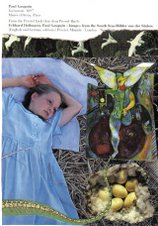
About Me

- Theresa Williams
- Northwest Ohio, United States
- "I was no better than dust, yet you cannot replace me. . . Take the soft dust in your hand--does it stir: does it sing? Has it lips and a heart? Does it open its eyes to the sun? Does it run, does it dream, does it burn with a secret, or tremble In terror of death? Or ache with tremendous decisions?. . ." --Conrad Aiken
Followers
Facebook Badge
Search This Blog
Favorite Lines
My Website
Epistle, by Archibald MacLeish
Visit my Channel at YouTube
Great Artists
Fave Painting: Eden
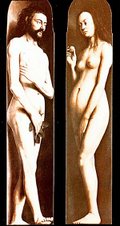
Fave Painting: The Three Ages of Man and Death

by Albrecht Dürer
From the First Chapter
My Original Artwork: Triptych
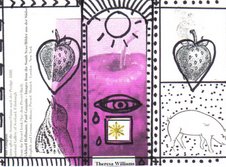
Wishing
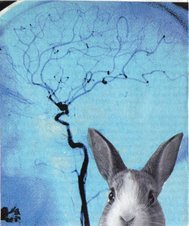
Little Deer
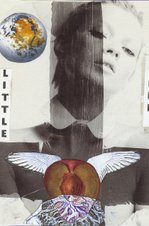
Transformation
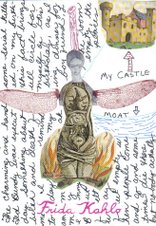
Looking Forward, Looking Back
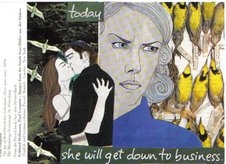
Blog Archive
-
▼
2007
(193)
-
▼
June
(17)
- Preparing for the Fall
- "Trash"
- Until there be no Guernicas left
- After reading Cynthia's 47th Birthday entry, "Bari...
- My Walt Whitman Box
- I Am With You
- Art and Suffering (Part II)
- The Suffering Artist (In A World That Doesn't Like...
- My Yard, Three Views. View #3
- My Yard, Three Views. View #2
- My Yard, Three Views. View #1
- Openly, yes
- The News Today Was About The Sun
- Reading, Researching, and Pulling Weeds
- Why They Write
- Bright Side of Life
- Keep Playing
-
▼
June
(17)
Labels
- adolescence (1)
- Airstream (7)
- Alain de Botton (1)
- all nighters (2)
- Allen (1)
- altars (1)
- Angelus Silesius (2)
- animals (1)
- Annie Dillard (1)
- Antonio Machado (2)
- AOL Redux (1)
- April Fool (1)
- Archibald MacLeish (1)
- arts and crafts (55)
- Auden (1)
- awards (2)
- AWP (2)
- Bach (1)
- Basho (5)
- Beauty and the Beast (1)
- birthdays (1)
- blogs (5)
- boats (2)
- body (2)
- books (7)
- bookstores (1)
- Buddha (1)
- Buddha's Little Instruction Book (2)
- butterfly (4)
- buzzard (2)
- Capote (4)
- Carmel (1)
- Carson McCullers (1)
- cats (15)
- Charles Bukowski (1)
- Charles Simic (2)
- Christina Georgina Rossetti (1)
- church (2)
- confession (1)
- Conrad Aiken (1)
- cooking (5)
- crows (1)
- current events (2)
- D. H. Lawrence (3)
- death (6)
- Delmore Schwartz (4)
- detachment (1)
- dogs (7)
- domestic (3)
- dreams (21)
- Edward Munch (4)
- Edward Thomas (1)
- Eliot (3)
- Eliot's Waste Land (2)
- Emerson (2)
- Emily Dickinson (10)
- ephemera (1)
- Esalen (6)
- essay (3)
- Eugene O'Neill (3)
- Ezra Pound (1)
- F. Scott Fitzgerald (1)
- fairy tales (7)
- Fall (16)
- Famous Quotes (16)
- festivals (2)
- fire (5)
- Floreta (1)
- food (1)
- found notes etc. (1)
- found poem (2)
- fragments (86)
- Frida Kahlo (1)
- frogs-toads (4)
- Georg Trakl (1)
- gifts (1)
- Global Warming (1)
- Gluck (1)
- goats (1)
- Goodwill (1)
- Great lines of poetry (2)
- Haibun (15)
- haibun moleskine journal 2010 (2)
- Haiku (390)
- Hamlet (1)
- Hart Crane (4)
- Hayden Carruth (1)
- Henry Miller (1)
- holiday (12)
- Hyman Sobiloff (1)
- Icarus (1)
- ikkyu (5)
- Imagination (7)
- Ingmar Bergman (1)
- insect (2)
- inspiration (1)
- Issa (5)
- iTunes (1)
- Jack Kerouac (1)
- James Agee (2)
- James Dickey (5)
- James Wright (6)
- John Berryman (3)
- Joseph Campbell Meditation (2)
- journaling (1)
- Jung (1)
- Juniper Tree (1)
- Kafka (1)
- Lao Tzu (1)
- letters (1)
- light (1)
- Lorca (1)
- Lorine Niedecker (2)
- love (3)
- Lucille Clifton (1)
- Marco Polo Quarterly (1)
- Marianne Moore (1)
- Modern Poetry (14)
- moon (6)
- movies (20)
- Muriel Stuart (1)
- muse (3)
- music (8)
- Mystic (1)
- mythology (6)
- nature (3)
- New Yorker (2)
- Nietzsche (1)
- Northfork (2)
- November 12 (1)
- October (6)
- original artwork (21)
- original poem (53)
- Our Dog Buddha (6)
- Our Dog Sweet Pea (7)
- Our Yard (6)
- PAD 2009 (29)
- pad 2010 (30)
- Persephone (1)
- personal story (1)
- philosophy (1)
- Phoku (2)
- photographs (15)
- Picasso (2)
- Pilgrim at Tinker Creek (1)
- Pillow Book (5)
- Pinsky (2)
- plays (1)
- poem (11)
- poet-seeker (9)
- poet-seer (6)
- poetry (55)
- politics (1)
- poppies (2)
- presentations (1)
- Provincetown (51)
- Publications (new and forthcoming) (13)
- rain (4)
- Randall Jarrell (1)
- reading (6)
- recipes (1)
- Reciprocity (1)
- Richard Brautigan (3)
- Richard Wilbur (2)
- Rilke (5)
- river (5)
- river novel (1)
- rivers (12)
- Robert Frost (2)
- Robert Rauschenberg (1)
- Robert Sean Leonard (1)
- Robinson Jeffers (1)
- Rollo May (2)
- Rumi (1)
- Ryokan (1)
- Sexton (1)
- short stories (13)
- skeletons (2)
- sleet (1)
- snake (1)
- Snow (24)
- solitude (1)
- spider (2)
- spring (1)
- Stanley Kunitz (1)
- students (2)
- suffering (4)
- suicide (2)
- summer (20)
- Sylvia Plath (2)
- Talking Writing (1)
- Tao (3)
- teaching (32)
- television (4)
- the artist (2)
- The Bridge (3)
- The Letter Project (4)
- The Shining (1)
- Thelma and Louise (1)
- Theodore Roethke (16)
- Thomas Gospel (1)
- Thomas Hardy (1)
- toys (3)
- Transcendentalism (1)
- Trickster (2)
- Trudell (1)
- Ursula LeGuin (1)
- vacation (10)
- Vermont (6)
- Virginia Woolf (1)
- Vonnegut (2)
- Wallace Stevens (1)
- Walt Whitman (8)
- weather (7)
- website (3)
- what I'm reading (2)
- William Blake (2)
- William Butler Yeats (5)
- wind (3)
- wine (2)
- winter (24)
- wood (3)
- Writing (111)
- Zen (1)




